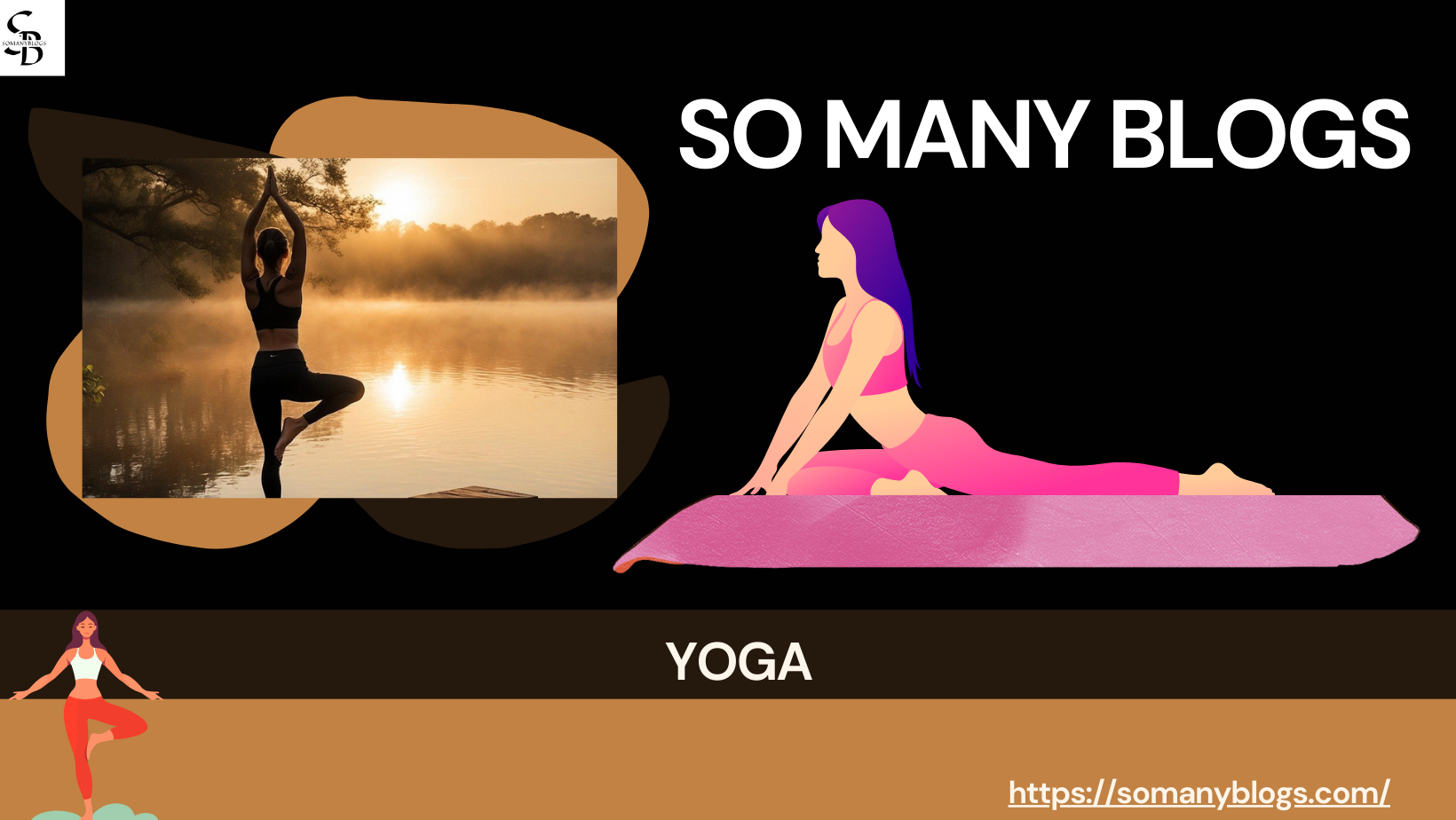
YOGA
The Ultimate Guide to Yoga: Transform Your Body and Mind
So Many Blogs told You that yoga is more than just a physical exercise; it’s a holistic practice that integrates body, mind, and spirit. With roots in ancient India, yoga has become a global phenomenon, celebrated for its ability to promote physical health, mental clarity, and spiritual growth. Whether you’re a beginner or a seasoned practitioner, yoga offers a wealth of life-changing benefits. In this guide, we’ll explore the different aspects of yoga, including its benefits, different styles, and how you can start incorporating it into your daily routine.
What is yoga?
Yoga is a practice that combines physical postures, breathing techniques, meditation, and ethical principles to promote overall well-being. The word “yoga” comes from the Sanskrit root “yuj,” meaning to yoke or unite, symbolizing the unification of the individual self with universal consciousness. Yoga isn’t just about flexibility or strength; It’s all about creating balance and harmony in your body and mind.
Benefits of practicing yoga
Yoga offers numerous benefits for both your body and mind.
Here are some of the key benefits:
Improved flexibility: Regular yoga practice stretches and lengthens your muscles, increasing your range of motion and flexibility. This is especially beneficial for people who spend a lot of time sitting or have stiff muscles.
Increased strength: Many yoga poses require you to support your body weight in different ways, which helps build muscle strength. Strong muscles protect against conditions like arthritis and back pain, and also improve your posture.
Better posture: Poor posture can lead to a variety of issues, including back and neck pain. Yoga helps correct alignment issues and promotes better posture by strengthening the muscles that support your spine.
Stress relief: Yoga is known for its stress-relieving properties. Through deep breathing exercises and meditation, yoga helps calm your nervous system, reducing stress and anxiety.
Improved breathing: Pranayama, or breath control, is a key element of yoga. Practicing pranayama can increase lung capacity, improve oxygen absorption, and improve overall respiratory function.
Increased focus and mental clarity: Yoga encourages mindfulness and meditation, which can improve concentration, focus, and mental clarity. This makes it easier to face daily challenges with a clear and calm mind.
Improved mental well-being: Regular yoga practice can help reduce symptoms of depression and anxiety, promote a positive outlook on life, and improve emotional stability.
Different styles of yoga
Yoga is not a one-size-fits-all practice; there are many different styles, each with their own unique benefits.
Here are some of the most popular types of yoga:
Hatha yoga: Often considered the foundation of all styles of yoga, hatha yoga is ideal for beginners. It focuses on basic poses (asanas) and breathing techniques (pranayama), making it a great starting point for those new to yoga.
Vinyasa Yoga: Vinyasa yoga, also known as flow yoga, involves combining breath with movement. It’s a dynamic practice that moves from one pose to another, creating a fluid sequence. Vinyasa is great for those looking to build strength and flexibility while keeping the practice lively and engaging.
Ashtanga Yoga: Ashtanga is a more rigorous style of yoga that follows a set sequence of poses. It’s physically demanding and requires a high level of discipline, making it ideal for those looking for a challenging workout.
Bikram Yoga: Bikram, also known as hot yoga, involves practicing a set sequence of 26 poses in a heated room. The heat helps to relax muscles and increase flexibility, while also aiding detoxification through sweating.
Yin Yoga: Yin Yoga is a slow-paced style in which poses are held for longer periods of time (usually 3-5 minutes). This practice focuses on the deep connective tissues, promoting flexibility and joint mobility. It is especially beneficial for stress relief and relaxation.
Restorative Yoga: This gentle form of yoga focuses on relaxation and restoration. The poses are supported by props such as blankets and bolsters, allowing the body to fully relax and release tension. Restorative yoga is ideal for those seeking deep relaxation and stress relief.
Kundalini Yoga: Kundalini focuses on awakening the energy at the base of the spine through breath, movement, and meditation. It is a spiritual practice that aims to balance the chakras and raise awareness.
First steps with yoga:
If you’re just starting to practice yoga, it’s important to start slow and listen to your body.
Here are some pointers to get you started:
Find the right classes: Search for beginner classes in your area or online. Many studios offer introductory courses that teach the basics of yoga. Online platforms offer an equally wide selection of activities that you can attend from the comfort of your home.
Wear comfortable clothing: Choose clothing that allows you to move freely. Yoga is usually practiced barefoot, so you don’t need special footwear.
Use props: Don’t be afraid to use props like bells, ribbons, and rollers to spruce up your practice. Props can help you achieve the right setup and make poses more accessible.
Focus on rest: Yoga is as much about rest as it is about movement. Focus on deep, steady breathing throughout your practice, and use your breath to guide your movements.
Be patient: Progress in yoga comes with time and consistency. Don’t get discouraged if you can’t do certain positions right away. Yoga is a journey, not a destination.
Incorporate yoga into your daily routine
To truly experience the flowing benefits of yoga, it’s important to make it a regular part of your routine.
Here are some ways to incorporate yoga into your daily life:
Start your day with yoga: Practicing yoga in the morning can set a positive tone for the rest of the day. Even a brief, 10-minute session can help you feel more focused and energized.
Use yoga as an afternoon break: Give yourself a break from your workday for a few minutes of yoga. Stretching and deep breathing can help ease tension and improve concentration.
Unwind with evening yoga: End the day with a relaxing yoga session to wind down and prepare your body for sleep. Gentle poses and mindful breathing can help release the stress of the day.
Practice mindfulness throughout the day: Incorporate yoga principles like mindfulness and deep breathing into your daily activities. This can help you stay calm, focused, and present no matter what challenges arise.
Yoga and Diet: Nourishing the Body
Yoga is often associated with a healthy, balanced diet. Eating nutritious foods can enhance your yoga practice by giving your body the energy and nutrients it needs.
Here are some dietary guidelines for yogins:
Eat a balanced diet: Focus on whole foods like fruits, vegetables, whole grains, lean proteins, and healthy fats. These products provide consistent energy and support overall health.
Make sure to stay hydrated: Drink plenty of water throughout the day, specifically before and after your yoga practice. Proper hydration is essential for maintaining energy levels and supporting physical fitness.
Eat mindfully: Practice mindful eating by paying attention to hunger and fullness cues. Choose foods that nourish your body and make you feel good.
Avoid heavy pre-practice meals: Eating a large meal before yoga can make you feel sleepy and uncomfortable. Choose a light snack if you need to energize before your session.
A judgement
Yoga is a powerful practice that can change your body, mind, and spirit. Whether you’re looking to improve flexibility, reduce stress, or improve mental clarity, yoga offers something for everyone. By incorporating yoga into your daily routine and focusing on a balanced diet, you can experience this ancient practice’s profound benefits. Remember, yoga isn’t about perfection; But progress and discovering yourself. Start your journey today and enjoy the many rewards that flow from a consistent yoga practice.

